| they/them | 18 | blog to keep me sane whilst writing
Don't wanna be here? Send us removal request.
Text
This is for all the writeblrs who don’t share their writing.
This is for all the writeblrs who don’t have an active WIP to share.
This is for all the writeblrs who lurk in the community without engaging a whole lot.
This is for all the writeblrs who aren’t sure if they can call themselves a writeblr.
This is for all the writeblrs who don’t feel like they belong in the community.
You are such an important and valuable member of our community. I know that sometimes it can feel really isolating, but I see you and I am so glad that you are here. Whether you do the ‘typical’ writeblr things or not, you are absolutely a valid writeblr and an irreplaceable part of the community. Writeblr wouldn’t be the same without your presence and it is made so much better by you being a part of it.
Thank you for being a part of the writeblr community.
1K notes
·
View notes
Text
Writer's Guide: Writing about Alcoholic Drinks and Cocktails
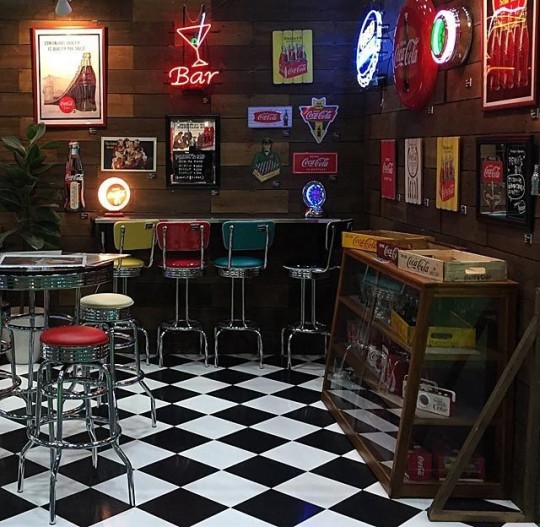
Or how to write believable bar and nightclub scenes. I often find myself helping friends with their WIPs and often it as a bartender, I find myself having to correct them on bar and mixology terminology. So here's my quick guide to keeping your lingo on the straight and narrow.
Terminology
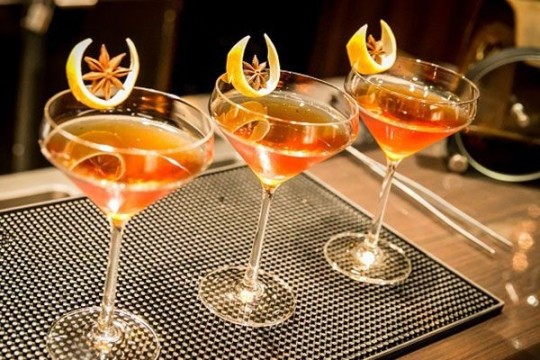
DASH/SPLASH: a drop of a mixer such as juice or flavouring.
MIXER: non alcholic beveraged served with the measure of alcohol in the same glass.
NEAT: Plain, without any addition of ice or a mixture. Just the alcohol.
ON THE ROCKS: Served over Ice.
STRAIGHT UP: The cocktail is chilled with ice and strained into a glass with no ice
DIRTY – if somebody asks for a dirty martini, you add olive juice, the more juice the dirtier it is
DRY- A dry martini includes a drop of vermouth and an extra dry martini contains a drop of scotch swirled in the glass and drained before adding the gin
BACK – a ‘back’ is a drink that accompanies an alcholic beverage such as water or Coke, but isn't mixed.
GARNISH – something added to a drink such as a lime or lemon or orange.
TWIST - a twist is literally a twist of fruit skin in the drink.
BITTERS – a herbal alcoholic blend added to cocktails.
RIMMED - the glass is coated in salt or sugar to enhance the taste.
VIRGIN- non alcoholic
MOCKTAIL- a virgin cocktail
DOUBLE - Two measures of the same alcohol in the same glass. A bartender can only legally serve a double in the same glass. They cannot serve you a triple.
Equipment
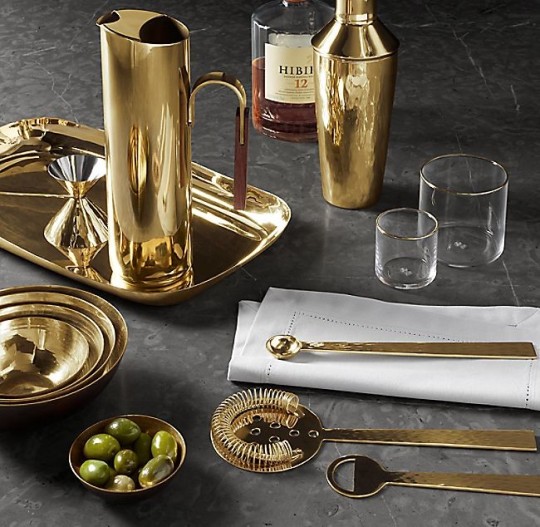
COCKTAIL SHAKER - it is a metal cup that fits into a glass, used to shake the components of your drink together with ice to chill it.
STRAINER- used to seperate ice in the shaker from the liquid within as you pour it into the glass.
MEASURES- these are little metal cylinders meant to measure out the pours of the alcohol. You pour the alcohol from the bottle into the measure and then put it into the glass. It's imperative that the right measure goes into the glass or the drink will taste of shit.
BAR SPOON – a long spoon meant to mix the drink.
OPTIC- it is a mechanism that attaches a bottle to an automatic pourer. The bartender usually fits the glass under the spout and pushes up to release the amount which cuts off at the single measure.
SHOT GLASS- a shot glass is a small glass to contain one measure
PINT GLASS- a glass used for serving pints of lager or ale
HALF PINT GLASS - a tulip shaped glass half the measure of a pint glass
SPEEDWELL/TAPS/DRAFT: are the taps used to pour beer from kegs stored under the bar floor.
SLIM JIM/HIGH BALL GLASS- It is a tall straight holding 8 to 12 ounces and used for cocktails served on the rocks such as a Gin and Tonic.
ROCKS GLASS - or an old fashioned glass, it is short and round. These glasses are used for drinks such as Old Fashioneds or Sazerac
COUPE GLASS- Are broad round stemmed glasses used for cocktails that are chill and served without ice such as a Manhattan, Boulevardier or a Gimlet
MARTINI GLASS - a martini glass is that classic stemmed "v" shaped glass, used to serve drinks without mixers such as Martini and Cosmopolitans
MARGARITA GLASS - is a large, round bowl like glass with a broad and a tall stem used for Margaritas and Daiquiris
HURRICANE GLASS- a tall tulip-like shaped glass with a flared rim and short stem. It holds 20 ounces which means it is the perfect glass to serve iced cocktails in such as Pina Colada, Singapore Sling, Hurricane
Alcoholic Drinks

Vodka- Vodka is made from potatoes or fermented cereal grains. It has a strong taste and scent. It is usually consumed neat with a mixer such as Coke or Orange juice or cranberry juice or in cocktails like Martini, Bloody Mary and Cosmopolitan.
Whisky/Whiskey- Whiskey is a distilled alcoholic beverage, made from fermented grain mash such as barley, corn, rye, and wheat. It gets its flavour form being fermented in casks for long period of time. When serving a whiskey, one asks whether they want ice or a mixer. Everyone has their own preference. I prefer mine like myself, strong and Irish. Scotch is Scottish Brewed whisky.
Rum- Rum is made by fermenting and distilling sugarcane molasses/juice. It is aged in oak barrels. It has a sweet taste.
Beer: is made out of cereal grains and served chilled in bottles or pulled from taps/speedwells.
Ale: Ale in the middle ages referred to beer brewed without hops (a kind of flowering plant that gives beer its bitter taste). It is sweeter and would typically have a fruity aftertaste.
Stout- is a darker beer sometimes brewed from roasted malt, coming in a sweet version and dry version, the most famous stout being Guinness.
Poitín- (pronounced as pot-cheen) is made from cereals, grain, whey, sugar beet, molasses and potatoes. It is a Dangerous Drink (honestly i still don't know how I ended up in that field with a traffic cone and a Shetland pony) and technically illegal. Country folk in Ireland used to brew it in secrets in stills hidden on their land.
Vermouth: Is made from infused with roots, barks, flowers, seeds, herbs, spices, brandy but vermouth is classed aromatized wine. It comes sweet or dry
Gin- is made from juniper, coriander, citrus peel, cinnamon, almond or liquorice and grain alcohol. Gin has a strong scent and taste and is usually served in a martini or a tonic water.
Schnapps- refers to any strong, clear alcoholic beverage. It is considered one of the best types of spirits because of its pure and delicate aroma. Lesson: never drink peach schnapps.
Cocktails and Drinks
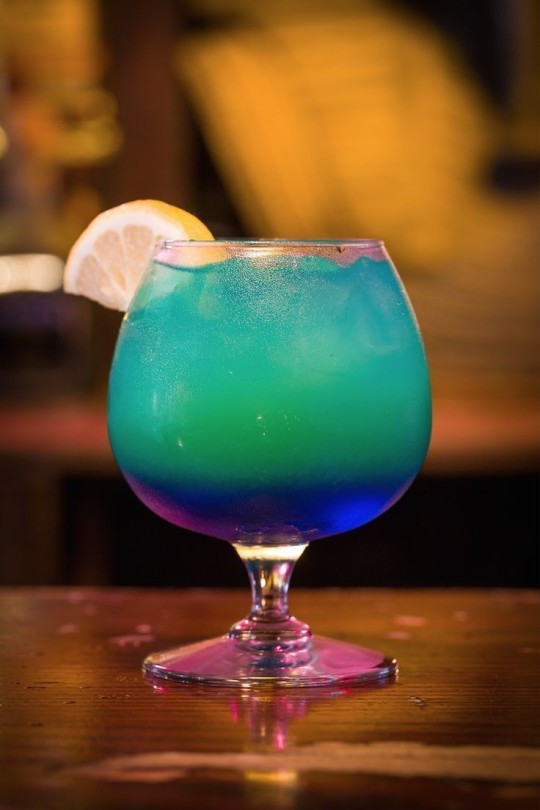
Irish Coffee: an Irish coffee is adding whiskey to coffee and sugar and topping it with cream. As a bartender, I would honestly rather cut my arm off than make one of these.
Baby Guinness: Is a shot made by pouting Tia Maria or Kaluah into a shot glass and spreading Baileys on the top so it looks like a small pint of Guinness.
Silver Bullet: a shot of mixed tequila and sambuca.
Long Island Iced Tea: The Long Island contains vodka, gin, tequila, light rum, lemon juice, triple sec and cola. It has a real kick.
Mai Tai: is made with light and dark rum, lime juice, orange curacao, orgeat syrup and rock candy syrup and served with a mint garnish.
Manhattan: The Manhattan is made with rye whiskey, sweet vermouth and bitters.
Margarita: The margarita is made with tequila, cointreau and lime juice.
Mojito: a mojito is made with muddled mint, white rum, lime juice, simple syrup and soda.
Martini: a martini is made of gin, dry vermouth and garnished with a lemon twist or olives.
Mimosa: a mimosa is a made with sparkling wine and orange juice.
Mint Julep: Made with Kentucky bourbon, simple syrup, mint leaves and crushed ice
Pina Colada: is made with white rum, dark rum, pineapple juice and coconut cream
Screwdriver: Vodka and Orange juice
Tequila Sunrise: tequila, orange juice and grenadine
Tom Collins: made with spiked lemonade, sparkling water, lemon juice, simple syrup and gin
Whiskey Sour: is made with powdered sugar, seltzer, lemon juice and whiskey.
White Russian: made with vodka, coffee liqueur and cream.
Black Russian: made with two parts coffee liqueur and five parts vodka.
Gin and Tonic: gin served with tonic water
Bloody Mary: made with vodka and tomato juice mixed with lemon juice, hot sauce, Worcestershire sauce, horseradish, fresh herbs, brown sugar and cracked black pepper.
Brandy Alexander: served straight up and made with brandy, cognac, creme de cacao and cream
Cosmopolitan: Made with citrus vodka, Cointreau, cranberry juice and fresh lime juice
Daiquiri: made with rum, lime juice and sugar.
Gimlet: gin and lime juice
My Top 10 Bartending Rules and Responsibilities
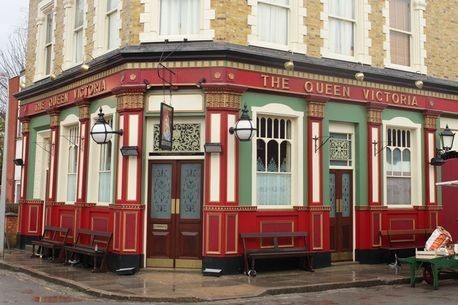
Overpouring is never an option. You can seriously hurt somebody by overpouring, not to mention spoil the drink and ruin your sales. You only serve people what they ask and never more.
When somebody has had enough, you stop serving them. After a while, you know when to cut somebody off.
Never leave bottles on the counter or in reach of customers. Your expensive spirits should never be in reach of anybody but you.
If you tell somebody your selling them premium and top shelf alcohol, you cannot substitute with cheaper licqor. It's illegal.
As a bartender, your eyes always have to be scanning a crowd. You can't leave people hanging.
The golden rule - if you see somebody messing with someone's drink, you chuck it if you can or warn the person. And you get that son of a bitch out of your pub.
50% of the job is cleaning. You have to clean your tools constantly. You cannot reuse measures and spouts, you have to wash everything. Beer traps are clean out every night, rubber mats are washed and anything you have used has to be clean.
You have to hand dry your glasses. You never polish a pint glass as it fucks up the pint. You polish your cocktail glasses, shot glasses and straight glasses.
If someone seems down or on their own, you try make conversation. Often you'll hear some disturbing stuff but always try lend an ear or make everyone feel included.
If you break a glass in the ice bucket, you got to get rid of the ice.
30K notes
·
View notes
Text
let lgbtq authors write about tragedy with lgbtq characters. let them write about death, toxic relationships, abuse. let them write about what it is like to be human without having to worry about “good representation” and bury your gays when the stories they want to tell may include the ugly sides of living.
i’m exhausted of hearing about authors being forced to out themselves when accused of bad representation, queerbaiting, or bury your gays.
i don’t think authors (even lgbtq authors!) are infallible in the way they can portray lgbtq characters, and they should accept criticism but also i’m fucking tired of the concept that Every lgbtq Character needs to be the Pinnacle of Purity otherwise it’s ‘bad representation’
#writing boosts;#( <- new tag for writing related pick-me-ups )#( but yeah; tragedies make me feel so much more heard and seen than just fluff )#( ofc fluff and angst is best )
20K notes
·
View notes
Text
What do you mean "what age is my book targeted at" what are you on?? It's targeted for me and any other depressed goblin out there with a broken humour and a roulette wheel for a moral compass, age has nothing to do with this.
#writing joys;#( yes !!! )#( my target audience is ME )#( good if other ppl like it )#( but i write these specific niche things for me )
5K notes
·
View notes
Text

no matter how much i try, the first method never works for me.
and yes, i did make this meme. that's why the quality is questionable.
#writing joys;#( this and using astrology chart creator thingy to figure out their birthday )#( all my characters got intrigued irl astrology charts bc im a astrology nut )#( no one else cares about that but I CARE )
374 notes
·
View notes
Text
me: god it’s so sad that this character has to die, they could have had so much better
my friends: you’re the writer, you’re the one who killed them, you could just not kill them
me: no i’m gonna
#writing joys;#( writing character deaths wreck me so i hope its a sign that it will wreck the reader too :-) )
3K notes
·
View notes
Text
hello! :-)
--
this blog will accommodate all my writing needs ( resources, memes, inspos, encouragement ).
--
my main tags:
writing resources - self-explanatory
writing joys - memes abt writing
others writing - self-explanatory
writing fuel - inspos
writing boosts - pick-me-ups about writing
happy things - self-explanatory, usually not related to writing
about the author - personal posts
--
a little bit about me:
i use they/them, i’m 18 ( march babey ! ), i’m a lesbian and english isn’t my mother tongue ! :-)
i will keep my projects to myself, so no WIP content from me ! ( can’t promise no whiny personal posts regarding ‘writing is hard’ though ! )
my activity may be fickle as it is my last year in school! ; o ;
i mainly read comics ( webcomics, manga ). my fav genre is romance ! :-)
not all romance is created equal though. but i take pride in my expertise in finding quality romance.
feel free to ask me about romance questions regarding fiction ! ;-)
--
please do interact ( just liking this post is enough! ) if any of your wips have main or secondary romance ( any, have a soft spot for wlw though ) plot !! all genres are welcome. :-)
#about the author;#writeblr intro#( by the way; I WILL LOVE ALL YOUR OCS !! )#( this is a threat )#( i will do my best at maintaining the tagging system )
3 notes
·
View notes
Text
#writing joys;#( good. )#( if i were to publish a book... i want my author photo to be me with a cat :-) )
31K notes
·
View notes
Text
writers can have a little italicised oh. as a treat
38K notes
·
View notes
Text
YIPPIIII!!!! YEAH!!!!

WOOHOOOOOO!!!!!
#(i know this is not the purpose of this blog but... let me indulge selfishly this once...)#happy things;#cats;
38K notes
·
View notes
Text
Fantasy Guide to Architecture
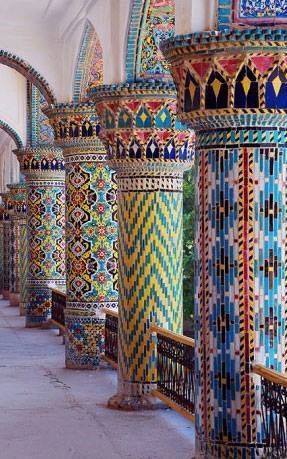


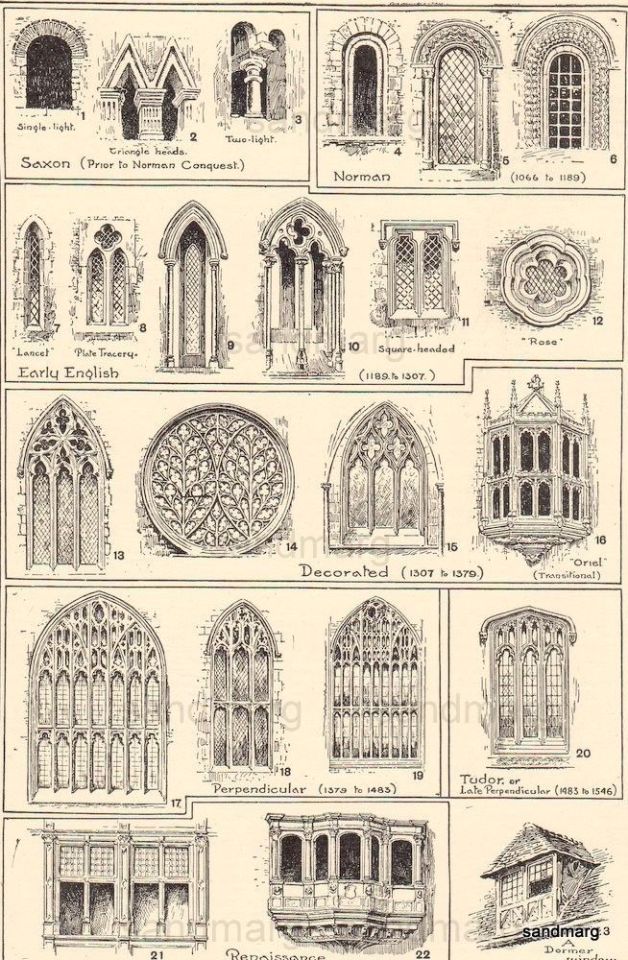


This post has been waiting on the back burner for weeks and during this time of quarantine, I have decided to tackle it. This is probably the longest post I have ever done. I is very tired and hope that I have covered everything from Ancient times to the 19th Century, that will help you guys with your worldbuilding.
Materials
What you build with can be determined by the project you intend, the terrain you build on and the availability of the material. It is one characteristic that we writers can take some some liberties with.
Granite: Granite is an stone formed of Igneous activity near a fissure of the earth or a volcano. Granites come in a wide range of colour, most commonly white, pink, or grey depending on the minerals present. Granite is hard and a durable material to build with. It can be built with without being smoothed but it looks bitchin' and shiny all polished up.
Marble: Probably everyone's go to materials for building grand palaces and temples. Marble is formed when great pressure is placed on limestone. Marble can be easily damaged over time by rain as the calcium in the rock dissolves with the chemicals found in rain. Marble comes in blue, white, green, black, white, red, gray and yellow. Marble is an expensive material to build with, highly sought after for the most important buildings. Marble is easy to carve and shape and polishes to a high gleam. Marble is found at converging plate boundaries.
Obsidian: Obsidian is probably one of the most popular stones mentioned in fantasy works. Obsidian is an igneous rock formed of lava cooling quickly on the earth's surfaces. Obsidian is a very brittle and shiny stone, easy to polish but not quite a good building material but a decorative one.
Limestone: Limestone is made of fragments of marine fossils. Limestone is one of the oldest building materials. Limestone is an easy material to shape but it is easily eroded by rain which leads most limestone monuments looking weathered.
Concrete: Concrete has been around since the Romans. Concrete is formed when aggregate (crushed limstone, gravel or granite mixed with fine dust and sand) is mixed with water. Concrete can be poured into the desired shape making it a cheap and easy building material.
Brick: Brick was one of history's most expensive materials because they took so long to make. Bricks were formed of clay, soil, sand, and lime or concrete and joined together with mortar. The facade of Hampton Court Palace is all of red brick, a statement of wealth in the times.
Glass: Glass is formed of sand heated until it hardens. Glass is an expensive material and for many years, glass could not be found in most buildings as having glass made was very expensive.
Plaster: Plaster is made from gypsum and lime mixed with water. It was used for decoration purposes and to seal walls. A little known fact, children. Castle walls were likely painted with plaster or white render on the interior.
Wattle and Daub: Wattle and daub is a building material formed of woven sticks cemented with a mixture of mud, one of the most common and popular materials throughout time.
Building terms
Arcade: An arcade is a row of arches, supported by columns.
Arch: An arch is a curved feature built to support weight often used for a window or doorway.
Mosaic: Mosaics are a design element that involves using pieces of coloured glass and fitted them together upon the floor or wall to form images.
Frescos: A design element of painting images upon wet plaster.
Buttress: A structure built to reinforce and support a wall.
Column: A column is a pillar of stone or wood built to support a ceiling. We will see more of columns later on.
Eave: Eaves are the edges of overhanging roofs built to allow eater to run off.
Vaulted Ceiling: The vaulted ceilings is a self-supporting arched ceiling, than spans over a chamber or a corridor.
Colonnade: A colonnade is a row of columns joined the entablature.
Entablature: a succession of bands laying atop the tops of columns.
Bay Window: The Bay Window is a window projecting outward from a building.
Courtyard/ Atrium/ Court: The courtyard is an open area surrounded by buildings on all sides
Dome: The dome resembles a hollow half of a sphere set atop walls as a ceiling.
Façade: the exterior side of a building
Gable: The gable is a triangular part of a roof when two intersecting roof slabs meet in the middle.
Hyphen: The hyphen is a smaller building connecting between two larger structures.
Now, let's look at some historical building styles and their characteristics of each Architectural movement.
Classical Style
The classical style of Architecture cannot be grouped into just one period. We have five: Doric (Greek), Ionic (Greek), Corinthian (Greek), Tuscan (Roman) and Composite (Mixed).
Doric: Doric is the oldest of the orders and some argue it is the simplest. The columns of this style are set close together, without bases and carved with concave curves called flutes. The capitals (the top of the column) are plain often built with a curve at the base called an echinus and are topped by a square at the apex called an abacus. The entablature is marked by frieze of vertical channels/triglyphs. In between the channels would be detail of carved marble. The Parthenon in Athens is your best example of Doric architecture.
Ionic: The Ionic style was used for smaller buildings and the interiors. The columns had twin volutes, scroll-like designs on its capital. Between these scrolls, there was a carved curve known as an egg and in this style the entablature is much narrower and the frieze is thick with carvings. The example of Ionic Architecture is the Temple to Athena Nike at the Athens Acropolis.
Corinthian: The Corinthian style has some similarities with the Ionic order, the bases, entablature and columns almost the same but the capital is more ornate its base, column, and entablature, but its capital is far more ornate, commonly carved with depictions of acanthus leaves. The style was more slender than the others on this list, used less for bearing weight but more for decoration. Corinthian style can be found along the top levels of the Colosseum in Rome.
Tuscan: The Tuscan order shares much with the Doric order, but the columns are un-fluted and smooth. The entablature is far simpler, formed without triglyphs or guttae. The columns are capped with round capitals.
Composite: This style is mixed. It features the volutes of the Ionic order and the capitals of the Corinthian order. The volutes are larger in these columns and often more ornate. The column's capital is rather plain. for the capital, with no consistent differences to that above or below the capital.
Islamic Architecture
Islamic architecture is the blanket term for the architectural styles of the buildings most associated with the eponymous faith. The style covers early Islamic times to the present day. Islamic Architecture has some influences from Mesopotamian, Roman, Byzantine, China and the Mongols.
Paradise garden: As gardens are an important symbol in Islam, they are very popular in most Islamic-style buildings. The paradise gardens are commonly symmetrical and often enclosed within walls. The most common style of garden is split into four rectangular with a pond or water feature at the very heart. Paradise gardens commonly have canals, fountains, ponds, pools and fruit trees as the presence of water and scent is essential to a paradise garden.
Sehan: The Sehan is a traditional courtyard. When built at a residence or any place not considered to be a religious site, the sehan is a private courtyard. The sehan will be full of flowering plants, water features snd likely surrounded by walls. The space offers shade, water and protection from summer heat. It was also an area where women might cast off their hijabs as the sehan was considered a private area and the hijab was not required. A sehan is also the term for a courtyard of a mosque. These courtyards would be surrounded by buildings on all sides, yet have no ceiling, leaving it open to the air. Sehans will feature a cleansing pool at the centre, set under a howz, a pavilion to protect the water. The courtyard is used for rituals but also a place of rest and gathering.
Hypostyle Hall: The Hypostyle is a hall, open to the sky and supported by columns leading to a reception hall off the main hall to the right.
Muqarnas : Muqarnas is a type of ornamentation within a dome or a half domed, sometimes called a "honeycomb", or "stalactite" vaulted ceiling. This would be cast from stone, wood, brick or stucco, used to ornament the inside of a dome or cupola. Muqarnas are used to create transitions between spaces, offering a buffer between the spaces.
African Architecture
African Architecture is a very mixed bag and more structurally different and impressive than Hollywood would have you believe. Far beyond the common depictions of primitive buildings, the African nations were among the giants of their time in architecture, no style quite the same as the last but just as breathtaking.
Somali architecture: The Somali were probably had one of Africa's most diverse and impressive architectural styles. Somali Architecture relies heavy on masonry, carving stone to shape the numerous forts, temples, mosques, royal residences, aqueducts and towers. Islamic architecture was the main inspiration for some of the details of the buildings. The Somali used sun-dried bricks, limestone and many other materials to form their impressive buildings, for example the burial monuments called taalo
Ashanti Architecture: The Ashanti style can be found in present day Ghana. The style incorporates walls of plaster formed of mud and designed with bright paint and buildings with a courtyard at the heart, not unlike another examples on this post. The Ashanti also formed their buildings of the favourite method of wattle and daub.
Afrikaner Architecture: This is probably one of the oddest architectural styles to see. Inspired by Dutch settlers (squatters), the buildings of the colony (planters/squatters) of South Africa took on a distinctive Dutch look but with an Afrikaner twist to it making it seem both familiar and strange at the same time.
Rwandan Architecture: The Rwandans commonly built of hardened clay with thatched roofs of dried grass or reeds. Mats of woven reeds carpeted the floors of royal abodes. These residences folded about a large public area known as a karubanda and were often so large that they became almost like a maze, connecting different chambers/huts of all kinds of uses be they residential or for other purposes.
Aksumite Architecture: The Aksumite was an Empire in modern day Ethiopia. The Aksumites created buildings from stone, hewn into place. One only has to look at the example of Bete Medhane Alem to see how imposing it was.
Yoruba Architecture: Yoruba Architecture was made by earth cured until it hardened enough to form into walls, or they used wattle and daub, roofed by timbers slats coated in woven grass or leaves. Each unit divided up parts of the buildings from facilities to residences, all with multiple entrances, connected together.
Igbo Architecture: The Igbo style follows some patterns of the Yoruba architecture, excepting that there are no connected walls and the spacing is not so equal. The closer a unit was to the centre, the more important inhabitants were.
Hausa architecture: Hausa Architecture was formed of monolithic walls coated in plaster. The ceilings and roof of the buildings were in the shape of small domes and early vaulted ceilings of stripped timber and laterite. Hausa Architecture features a single entrance into the building and circular walls.
Nubian Architecture: Nubia, in modern day Ethiopia, was home to the Nubians who were one of the world's most impressive architects at the beginning of the architecture world and probably would be more talked about if it weren't for the Egyptians building monuments only up the road. The Nubians were famous for building the speos, tall tower-like spires carved of stone. The Nubians used a variety of materials and skills to build, for example wattle and daub and mudbrick. The Kingdom of Kush, the people who took over the Nubian Empire was a fan of Egyptian works even if they didn't like them very much. The Kushites began building pyramid-like structures such at the sight of Gebel Barkal
Egyptian Architecture: The Egyptians were the winners of most impressive buildings for s good while. Due to the fact that Egypt was short on wood, Ancient Egyptians returned to building with limestone, granite, mudbrick, sandstone which were commonly painted with bright murals of the gods along with some helpful directions to Anubis's crib. The Egyptians are of course famous for their pyramids but lets not just sit on that bandwagon. Egyptian Architecture sported all kinds of features such as columns, piers, obelisks and carving buildings out of cliff faces as we see at Karnak. The Egyptians are cool because they mapped out their buildings in such a way to adhere to astrological movements meaning on special days if the calendar the temple or monuments were in the right place always. The Egyptians also only build residences on the east bank of the Nile River, for the opposite bank was meant for the dead. The columns of Egyptian where thicker, more bulbous and often had capitals shaped like bundles of papyrus reeds.
Chinese Architecture
Chinese Architecture is probably one of the most recognisable styles in the world. The grandness of Chinese Architecture is imposing and beautiful, as classical today as it was hundreds of years ago.
The Presence of Wood: As China is in an area where earthquakes are common, most of the buildings are were build of wood as it was easy to come across and important as the Ancient Chinese wanted a connection to nature in their homes.
Overhanging Roofs: The most famous feature of the Chinese Architectural style are the tiled roofs, set with wide eaves and upturned corners. The roofs were always tiled with ceramic to protect wood from rotting. The eaves often overhung from the building providing shade.
Symmetrical Layouts: Chinese Architecture is symmetrical. Almost every feature is in perfect balance with its other half.
Fengshui: Fengshui are philosophical principles of how to layout buildings and towns according to harmony lain out in Taoism. This ensured that the occupants in the home where kept in health, happiness, wealth and luck.
One-story: As China is troubled by earthquakes and wood is not a great material for building multi-storied buildings, most Chinese buildings only rise a single floor. Richer families might afford a second floor but the single stories compounds were the norm.
Orientation: The Ancient Chinese believed that the North Star marked out Heaven. So when building their homes and palaces, the northern section was the most important part of the house and housed the heads of the household.
Courtyards: The courtyard was the most important area for the family within the home. The courtyard or siheyuan are often built open to the sky, surrounded by verandas on each side.
Japanese Architecture
Japanese Architecture is famous for its delicacy, smooth beauty and simplistic opulence. Japanese Architecture has been one of the world's most recognisable styles, spanning thousands of years.
Wood as a Common Material: As with the Chinese, the most popular material used by the Japanese is wood. Stone and other materials were not often used because of the presence of earthquakes. Unlike Chinese Architecture, the Japanese did not paint the wood, instead leaving it bare so show the grain.
Screens and sliding doors: The shoji and fusuma are the screens and sliding doors are used in Japanese buildings to divide chambers within the house. The screens were made of light wood and thin parchment, allowing light through the house. The screens and sliding doors were heavier when they where used to shutter off outside features.
Tatami: Tatami mats are used within Japanese households to blanket the floors. They were made of rice straw and rush straw, laid down to cushion the floor.
Verandas: It is a common feature in older Japanese buildings to see a veranda along the outside of the house. Sometimes called an engawa, it acted as an outdoor corridor, often used for resting in.
Genkan: The Genkan was a sunken space between the front door and the rest of the house. This area is meant to separate the home from the outside and is where shoes are discarded before entering.
Nature: As both the Shinto and Buddhist beliefs are great influences upon architecture, there is a strong presence of nature with the architecture. Wood is used for this reason and natural light is prevalent with in the home. The orientation is meant to reflect the best view of the world.
Indian Architecture
India is an architectural goldmine. There are dozens of styles of architecture in the country, some spanning back thousands of years, influenced by other cultures making a heady stew of different styles all as beautiful and striking as the last.
Mughal Architecture: The Mughal architecture blends influences from Islamic, Persian along with native Indian. It was popular between the 16th century -18th century when India was ruled by Mughal Emperors. The Taj Mahal is the best example of this.
Indo-Saracenic Revival Architecture: Indo Saracenic Revival mixes classical Indian architecture, Indo-Islamic architecture, neo-classical and Gothic revival of the 1800s.
Cave Architecture: The cave architecture is probably one of the oldest and most impressive styles of Indian architecture. In third century BC, monks carved temples and buildings into the rock of caves.
Rock-Cut Architecture: The Rock-cut is similar to the cave style, only that the rock cut is carved from a single hunk of natural rock, shaped into buildings and sprawling temples, all carved and set with statues.
Vesara Architecture: Vesara style prevalent in medieval period in India. It is a mixture of the Dravida and the Nagara styles. The tiers of the Vesara style are shorter than the other styles.
Dravidian Architecture: The Dravidian is the southern temple architectural style. The Kovils are an example of prime Dravidian architecture. These monuments are of carved stone, set up in a step like towers like with statues of deities and other important figures adorning them.
Kalinga Architecture: The Kalinga style is the dominant style in the eastern Indian provinces. The Kalinga style is famous for architectural stipulations, iconography and connotations and heavy depictions of legends and myths.
Sikh Architecture: Sikh architecture is probably the most intricate and popular of the styles here. Sikh architecture is famous for its soft lines and details.
Romanesque (6th -11th century/12th)
Romanesque Architecture is a span between the end of Roman Empire to the Gothic style. Taking inspiration from the Roman and Byzantine Empires, the Romanesque period incorporates many of the styles.
Rounded arches: It is here that we see the last of the rounded arches famous in the classical Roman style until the Renaissance. The rounded arches are very popular in this period especially in churches and cathedrals. The rounded arches were often set alongside each other in continuous rows with columns in between.
Details: The most common details are carved floral and foliage symbols with the stonework of the Romanesque buildings. Cable mouldings or twisted rope-like carvings would have framed doorways.
Pillars: The Romanesque columns is commonly plainer than the classical columns, with ornate captials and plain bases. Most columns from this time are rather thick and plain.
Barrel Vaults: A barrel vaulted ceiling is formed when a curved ceiling or a pair of curves (in a pointed ceiling). The ceiling looks rather like half a tunnel, completely smooth and free of ribs, stone channels to strengthen the weight of the ceiling.
Arcading: An arcade is a row of arches in a continual row, supported by columns in a colonnade. Exterior arcades acted as a sheltered passage whilst inside arcades or blind arcades, are set against the wall the arches bricked, the columns and arches protruding from the wall.
Gothic Architecture (12th Century - 16th Century)
The Gothic Architectural style is probably one of the beautiful of the styles on this list and one of most recognisable. The Gothic style is a dramatic, opposing sight and one of the easiest to describe.
Pointed arch: The Gothic style incorporates pointed arches, in the windows and doorways. The arches were likely inspired by pre-Islamic architecture in the east.
Ribbed vault: The ribbed vault of the Gothic age was constructed of pointed arches. The trick with the ribbed vaulted ceiling, is that the pointed arches and channels to bear the weight of the ceiling.
Buttresses: The flying buttress is designed to support the walls. They are similar to arches and are connected to counter-supports fixed outside the walls.
Stained-Glass Window: This is probably one of the most recognisable and beautiful of the Gothic features. They can be set in round rose windows or in the pointed arches.
Renaissance Architecture (15th Century- 17th Century)
Renaissance architecture was inspired by Ancient Roman and Greek Architecture. Renaissance Architecture is Classical on steroids but has its own flare. The Renaissance was a time for colour and grandeur.
Columns and pilasters: Roman and Greek columns were probably the greatest remix of the Renaissance period. The architecture of this period incorporated the five orders of columns are used: Tuscan, Doric, Ionic, Corinthian and Composite. The columns were used to hold up a structure, support ceilings and adorn facades. Pilasters were columns within a chamber, lining the walls for pure decoration purposes.
Arches: Arches are rounded in this period, having a more natural semi-circular shape at its apex. Arches were a favourite feature of the style, used in windows, arcades or atop columns.
Cupola: Is a small dome-like tower atop a bigger dome or a rooftop meant to allow light and air into the chamber beneath.
Vaulted Ceiling/Barrel Vault: Renaissance vaulted ceilings do not have ribs. Instead they are semi-circular in shape, resting upon a square plain rather than the Gothic preference of rectangular. The barrel vault held by its own weight and would likely be coated in plaster and painted.
Domes: The dome is the architectural feature of the Renaissance. The ceiling curves inwards as it rises, forming a bowl like shape over the chamber below. The dome's revival can be attributed to Brunelleschi and the Herculean feat of placing a dome on the Basilica di Santa Maria del Fiore. The idea was later copied by Bramante who built St. Peter's Basilica.
Frescos: To decorate the insides of Renaissance buildings, frescos (the art of applying wet paint to plaster as it dries) were used to coat the walls and ceilings of the buildings. The finest frescos belong to Michelangelo in the Sistine Chapel.
Baroque (1625–1750)
Baroque incorporates some key features of Renaissance architecture, such as those nice columns and domes we saw earlier on. But Baroque takes that to the next level. Everything is higher, bigger, shinier, brighter and more opulent. Some key features of Baroque palaces and buildings would be:
Domes: These domes were a common feature, left over from the Renaissance period. Why throw out a perfectly good bubble roof, I ask you? But Baroque domes were of course, grander. Their interiors were were nearly always painted or gilded, so it drew the eye upwards which is basically the entire trick with Baroque buildings. Domes were not always round in this building style and Eastern European buildings in Poland and Ukraine for example sport pear-shaped domes.
Solomonic columns: Though the idea of columns have been about for years but the solomonic columns but their own twist on it. These columns spiral from beginning to end, often in a s-curved pattern.
Quadratura: Quadratura was the practice of painting the ceilings and walls of a Baroque building with trompe-l'oeil. Most real life versions of this depict angels and gods in the nude. Again this is to draw the eye up.
Mirrors: Mirrors came into popularity during this period as they were a cool way to create depth and light in a chamber. When windows faced the mirrors on the wall, it creates natural light and generally looks bitchin'. Your famous example is the Hall of Mirrors at the Palace of Versailles.
Grand stairways: The grand sweeping staircases became popular in this era, often acting as the centre piece in a hall. The Baroque staircase would be large and opulent, meant for ceremonies and to smoother guests in grandeur.
Cartouche: The cartouche is a design that is created to add some 3D effect to the wall, usually oval in shape with a convex surface and edged with scrollwork. It is used commonly to outline mirrors on the wall or crest doorways just to give a little extra opulence.
Neoclassical (1750s-19th century)
The Neoclassical Period involved grand buildings inspired by the Greek orders, the most popular being the Doric. The main features of Neoclassical architecture involve the simple geometric lines, columns, smooth walls, detailing and flat planed surfaces. The bas-reliefs of the Neoclassical style are smoother and set within tablets, panels and friezes. St. Petersburg is famous for the Neoclassical styles brought in under the reign of Catherine the Great.
Greek Revival (late 18th and early 19th century)
As travel to other nations became easier in this time period, they became to get really into the Ancient Greek aesthetic. During this architectural movement they brought back the gabled roof, the columns and the entablature. The Greek Revival was more prevalent in the US after the Civil War and in Northern Europe.
Hope this helps somewhat @marril96
27K notes
·
View notes